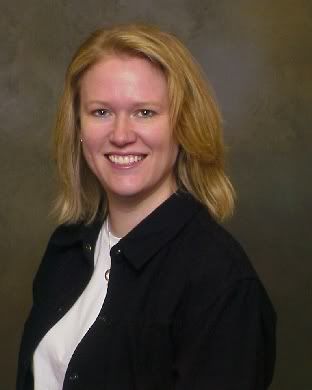I recently signed up for the Explore MN e-newsletter and I'm so happy I did!! Here are some of the things that are happening in our area this weekend:
TWIN CITIES GREATER METROPOLITAN VICINITY
The Minneapolis Institute of Arts will be the site of the 24TH ANNUAL ART IN BLOOM from Thursday, April 26 through Sunday, April 29. This spring celebration features more than 100 floral artists, whose designs will be on display next to the works of art that inspired them. In addition, enjoy lectures, demonstrations, free guided tours, Italian treats, the Garden & Gift Shop, Garden Guru Booth, and a complimentary Flowers After Hours Party with a scavenger hunt and art-trivia contest. Admission to the museum to view the floral arrangements is free. To learn more, dial 612/870-3131, or visit www.artsmia.org/art-in-bloom-2007
VALBORGSMÄSSOAFTON will be offered at the Gammelgården Museum in Scandia on Saturday, April 28, with a bonfire, singing and roasting hot dogs to welcome spring! In addition, there will be free tours, the opening of the Scandia Butik, and a performance by the Swedish Male Chorus. To find out more, dial 651/433-3430, or check out www.scandiamn.com/gammelgarden
The Science Museum of Minnesota in St. Paul will present EL DIA DE LOS NINOS on Saturday, April 28. This Latino celebration honors and celebrates the hopes and dreams of the children in every community. Come meet science and education professionals from the Twin Cities' Latino communities, participate in make-and-take activities, and enjoy entertainment with a Latino flair. For further information, dial 651/221-9444, or visit www.smm.org
URBAN EXPEDITION: MOROCCO! will be offered on Sunday, April 29, at the Landmark Center in St. Paul. Visitors will explore Morocco's rich cultural heritage, and learn how it has been influenced by being a North African nation and situated near the Middle East. For more information, dial 651/292-3225, or check out www.landmarkcenter.org
The St. Paul RiverCentre will be the site of the 5TH ANNUAL FESTIVAL OF NATIONS, Thursday through Sunday, May 3-6. Enjoy one of the nation's largest and longest-running multi-ethnic events, and travel the world without a passport. Ninety-seven different ethnic groups will share their foods, crafts and traditions that form the mosaic of our American culture. To find out more, dial 651/647-0191, or visit www.FestivalofNations.com
And just some of the upcoming concerts and performances will include:
BRIGHT EYES at the Historic State Theatre in Minneapolis, April 25
ROD STEWART at the Xcel Energy Center in St. Paul, April 25
INSANE CLOWN POSSE & TWIZTID at The Myth in Maplewood, April 29
CHURCH BASEMENT LADIES at the Plymouth Playhouse in Plymouth, May 2
LOREENA MCKENNITT at the Historic State Theatre, May 3
ELVIS COSTELLO & THE IMPOSTERS at The Myth, May 8
ALL SHOOK UP at the Historic Orpheum Theatre in Minneapolis, May 8-13
BILLY JOEL at the Xcel Energy Center, May 9
CHAMPIONS ON ICE at the Target Center in Minneapolis, May 12
A PRAIRIE HOME COMPANION with GARRISON KEILLOR at the Historic State Theatre, May 12 & 19
KENNY CHESNEY at the Xcel Energy Center, May 13
THE KILLERS at the Roy Wilkins Auditorium at the St. Paul RiverCentre, May 15
THE HONDA CIVIC TOUR 2007 featuring FALL OUT BOY at the Target Center, May 16
JON STEWART at the Historic Orpheum Theatre, May 18
THE ROWDY FRYNDS TOUR: HANK JR & SKYNYRD at the Target Center, May 19
PAT BENATAR & NEIL GIRALDO at Mystic Lake Casino & Hotel in Prior Lake, May 22
COMEDY CRAZE: MARCUS COMBS, BLT, B. COLE and JAZZ at the Historic State Theatre, May 24
For further information on any of these performances or events, please contact Ticketmaster at 651/989-5151
EXPLORE MINNESOTA NOW! For lodging specials and incredible deals currently being offered, check out our website at www.exploreminnesota.com For further travel information, contact one of our travel counselors, Monday through Friday, 8 am-4:30 pm, by dialing 1-888-TOURISM (868-7476). Thank you for Exploring Minnesota!
Please Note: Information provided by event contacts. Dates may change. Please confirm dates prior to travel. Explore Minnesota Tourism grants you permission to distribute this information freely to friends, family and others for personal use. However, any republication of the materials, full or partial, in electronic, print or other format, must prominently include the following statement: "The information in this report is provided courtesy of Explore Minnesota Tourism."
Pretty cool stuff in our own backyard, eh? Speaking of our backyard, how about our friends to the South, check out what they're doing the weekend after next:
Thirteen communities from Red Wing to Winona, Minnesota, and from Alma to Bay City, Wisconsin, will participate in the 100 MILE GARAGE SALE AROUND LAKE PEPIN, Friday, May 4 through Sunday, May 6. Maps of registered sales will be available in some communities. For more information, dial 651/345-0185, or check out http://www.lakecitymn.org/.
Holy buckets!!
Let me know if you end up going to any of these.
As always, your friend,
Beth Riegger.



